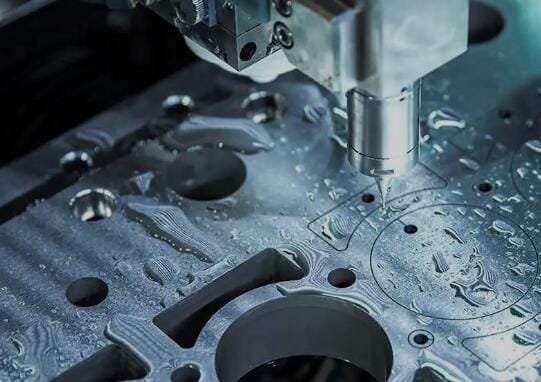Injection molding has become an essential technology for manufacturing high-precision components in the electronics and telecommunications industries. The process allows manufacturers to produce intricate, consistent, and high-quality plastic parts at scale. From casings to micro-connectors, injection molding supports these industries with reliable, versatile solutions, driving innovation in device design, functionality, and durability.

Precision Plastic Casings and Housings
One of the primary applications of injection molding in electronics and telecommunications is the creation of plastic casings and housings for devices. These components protect internal elements, including sensitive wiring and circuit boards, from dust, moisture, and physical damage. Injection molding enables manufacturers to design and produce enclosures with high dimensional accuracy, which is essential for devices where space constraints and tolerance limits are critical. From smartphones and tablets to routers and modems, molded plastic housings provide a durable, lightweight solution while enhancing user safety and product longevity.
Connectors and Interconnect Solutions
Connectors are critical to the operation of electronic devices, serving as connection points for data, signal, and power transfer. Injection molding is an ideal method for producing connectors and interconnect components in electronics and telecommunications. With tight tolerances and the ability to create complex geometries, injection molding ensures high-quality connectors that are durable and efficient. This capability is essential in telecommunication infrastructures, where connectors must be able to withstand temperature fluctuations, humidity, and other environmental factors.
Injection molding also allows for the integration of multiple materials, such as using plastic for the casing while incorporating metal inserts for conductivity. This versatility streamlines production, reduces assembly time, and enhances connector functionality, which is critical in high-performance telecommunications equipment.
Micro-Precision Parts for Miniaturized Devices
The demand for smaller, more powerful devices has spurred the need for micro-precision parts. Injection molding meets this demand by enabling the production of miniature components that retain high performance and durability. These micro-sized parts, such as micro switches, tiny connectors, and intricate structural elements, are essential in mobile phones, hearing aids, and wearable technology. The accuracy of injection molding ensures that these small-scale parts fit seamlessly within compact assemblies, maintaining the integrity of devices despite their reduced size.
Advances in micro-molding technologies have allowed manufacturers to work with precision down to the micrometer, offering engineers and designers more flexibility to create compact devices without compromising on functionality. Injection-molded micro-parts are also widely used in fiber optics and other telecommunications equipment that rely on precision components for signal processing and data transmission.
Heat Dissipation Components
As electronic devices become more powerful, managing heat dissipation becomes critical for performance and safety. Injection-molded plastic parts, combined with heat-resistant materials and conductive fillers, are widely used to manufacture components that aid in heat dissipation. These components include heat sinks, thermal interface materials, and protective covers. Heat-resistant plastic compounds can endure prolonged exposure to high temperatures, making them ideal for use in telecommunications equipment, computers, and industrial electronics.
Additionally, injection molding allows manufacturers to design heat dissipation components with specific geometries that maximize airflow and heat transfer. This capability helps maintain device performance, prevent overheating, and prolong the lifespan of electronics.
Cable Insulation and Management Solutions
Efficient cable insulation and management are essential in both electronics and telecommunications, where clear, organized cabling reduces interference and improves signal integrity. Injection molding enables the creation of durable insulation materials for cables and wiring, including coaxial cables, fiber optic cables, and Ethernet cables.
Moreover, injection-molded cable management solutions, such as clips, ties, and grommets, are widely used to organize cables in electronic devices and telecommunications setups. By keeping cables properly routed and insulated, these molded components help protect against physical wear, reduce signal loss, and improve device reliability.
Structural and Mounting Components
Many electronics and telecommunications devices require structural components for mounting, support, and reinforcement. Injection molding can produce high-strength parts with varying wall thicknesses and shapes to meet specific structural needs. These parts can include brackets, mounts, and internal supports that maintain the structural integrity of a device without adding excessive weight.
In telecommunications infrastructure, these structural components are particularly valuable as they ensure that mounted equipment remains stable, even under adverse environmental conditions. The versatility of injection molding allows manufacturers to create parts that match the exact specifications needed for a wide range of electronic and telecom applications.
Conclusion
Injection molding continues to revolutionize the electronics and telecommunications sectors by enabling the mass production of precise, high-quality components. From casings and connectors to micro-precision parts and cable management solutions, injection molding is integral to developing and maintaining reliable, cutting-edge technology. By partnering with a reputable supplier, businesses can access innovative injection-molded components that enhance device durability, performance, and design. For more information or inquiries, contact us to learn how injection molding can benefit your electronics and telecommunications products.
